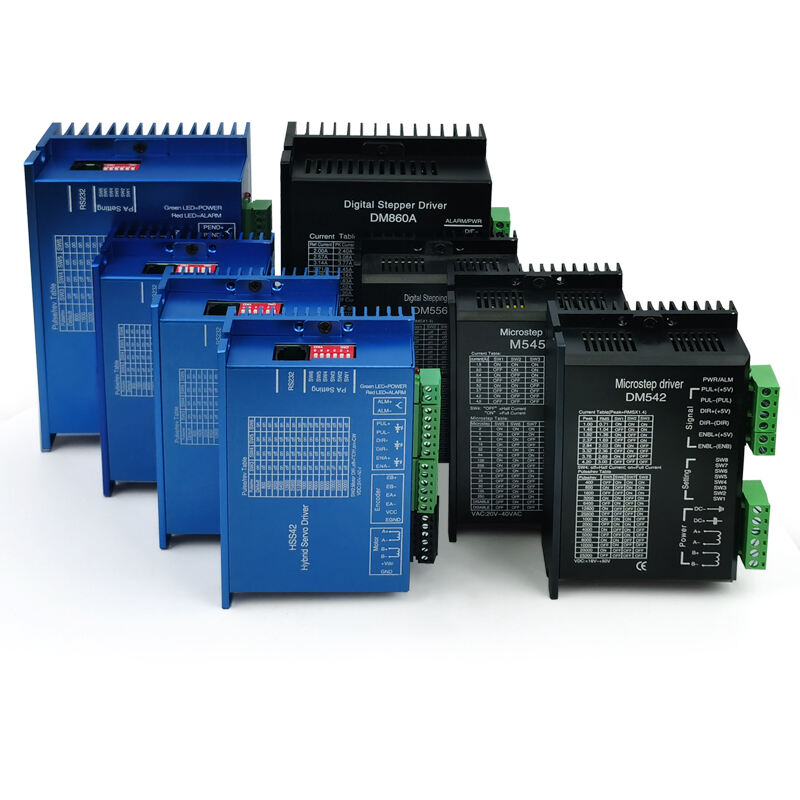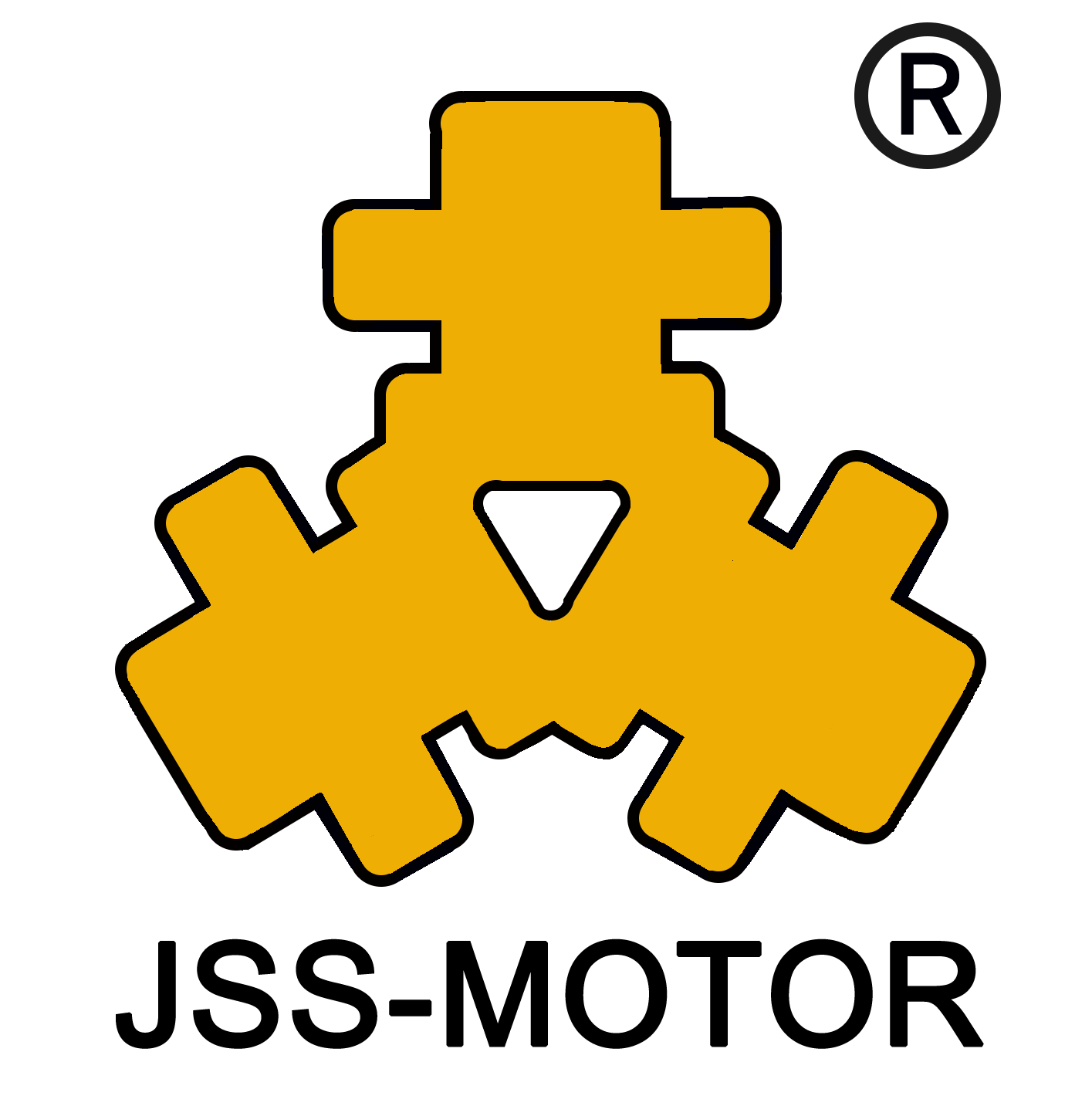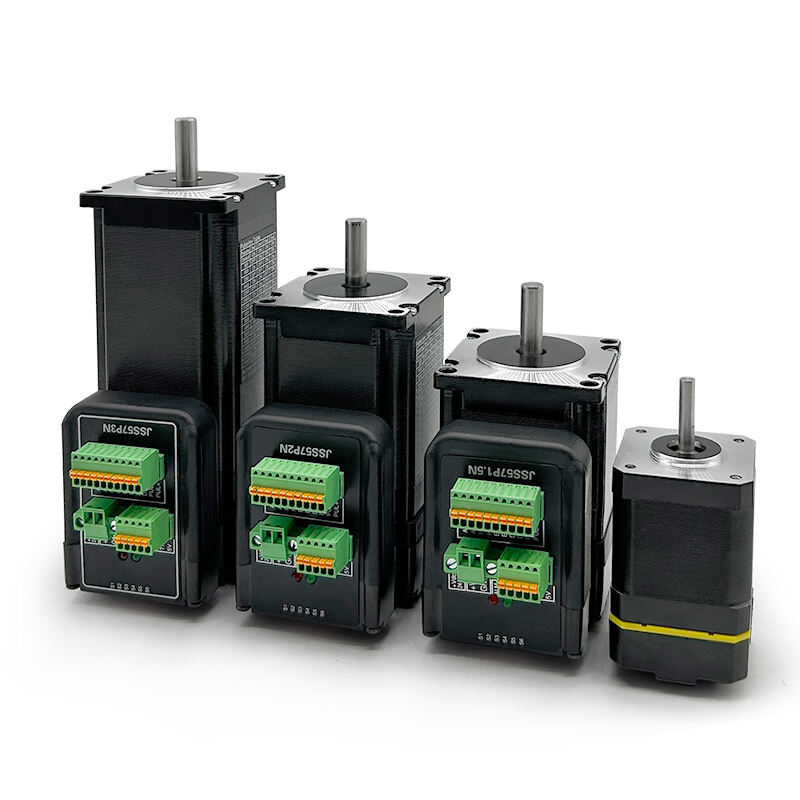Koje su učestale poteškoće na koje treba obratiti pažnju kod upotrebe upravljačkih sklopova korak po korak motora?
Uvod u upravljačke sklopove koraka
A motorni upravljač stepena je jedna od najvažnijih komponenti u sustavima upravljanja kretanjem koji koriste motore koraka. On djeluje kao sučelje između kontrolne elektronike, poput mikrokontrolera ili CNC kontrolera, i samog motora. Upravljački sklop prevodi signale niskog nivoa u precizne nizove impulsa struje koji aktiviraju zavojnice motora. Na taj način određuje moment, brzinu i točnost pozicioniranja motora. Iako su motori koraka široko cijenjeni zbog svoje preciznosti i jednostavnosti, nepravilna uporaba motorni upravljač stepena može dovesti do problema koji utječu na učinak, pouzdanost i čak sigurnost sustava. Razumijevanje uobičajenih problema povezanih s ovim vozačima ključno je za inženjere, tehničare i amatre koji rade u područjima poput 3D printanja, robotike, medicinske opreme i industrijske automatizacije.
Električni problemi s vozačima korak-pera motora
Problem pregrijavanja
Jedan od najčešćih problema s kojima se susrećemo je prekomjerno zagrijavanje. Vozač korak-pera motora regulira i isporučuje struju motoru, a prekomjerna struja ili produljeno vožnja pod visokim opterećenjem stvaraju toplinu. Ako vozač nema dovoljno hlađenja, može ući u termalno isključenje ili otkazati prijevremeno. To je posebno često u kompaktnim sustavima s ograničenim protokom zraka, poput stolnih 3D pisača. Tepisnici, hladnjaci za zrak i pažljiva prilagodba postavki struje često su potrebni kako bi se spriječilo prekomjerno zagrijavanje.
Neispravne postavke struje
Svaki step motor ima nazivnu struju koja određuje njegove sigurne uvjete rada. Ako je vođica step motora konfigurirana tako da isporučuje preveliku struju, motor će se pregrijati, što može dovesti do demagnetizacije ili oštećenja namota. Naprotiv, postavljanje struje prenisko smanjuje izlazni moment, što dovodi do propuštanja koraka i gubitka sinkronizacije. Stoga je uravnoteženje strujnog ograničenja ključno za optimizaciju učinaka i zaštitu i motora i vođice.
Neskladnost izvora energije
Izvor energije koji se koristi s vođicom step motora mora osigurati stabilni napon i dovoljnu struju. Neskladnost, poput korištenja izvora male snage, može uzrokovati slabiju učinkovitost vođice ili njezino ponovno pokretanje pod opterećenjem. Previsoki napon, s druge strane, može oštetiti unutarnje sklopove vođice. Kritično je uskladiti specifikacije vođice s adekvatnim izvorom energije.
Električni šum i smetnje
Upozorivači koraka rade s preklopom visoke frekvencije, što može generirati ili biti podložno elektromagnetskom smetanju (EMI). Loše prakse u žicom, dugački kabeli ili nedovoljno ekraniranje mogu dovesti do izobličenja signala, što rezultira izgubitkom koraka, nestabilnim kretanjem ili čak potpunim kvarom upravljača. Pravilno uzemljenje, ekranirani kabeli i otpornici za razdvajanje su učinkovite mjere zaštite.
Mehanički i problemi povezani s kretanjem
Izgubljeni koraci
Uobičajeni problem u sustavima motora s koracima su izgubljeni koraci. Kada motor ne uspije napredovati za potrebni iznos, gubi se točnost pozicije. Uzroci uključuju nedovoljnu struju, prekomjernu opterećenost, rezonanciju ili nagle promjene ubrzanja. Za razliku od servo motora, sustavi s motorima na korake su otvorenog kruga, pa ne mogu detektirati ili ispraviti izgubljene korake bez vanjske povratne informacije. Zbog toga je podešavanje parametara upravljača ključno za pouzdano funkcioniranje.

Rezonancija i vibracije
Korakovi motori skloni su rezonanciji pri određenim brzinama zbog svojstvenog načina rada. To može uzrokovati prekomernu buku, vibracije ili gubitak momenta. Loše podešen upravljač korakova motora koji ne podržava mikrokorak često pogoršava probleme s rezonancijom. Savremeni upravljači ublažavaju to korištenjem mikrokoraka i algoritama protiv rezonancije, ali nepravilna konfiguracija i dalje može dovesti do nestabilnog rada.
Nedovoljan moment pri visokim brzinama
Kako se brzina korakova motora povećava, izlazni moment smanjuje se zbog induktivne reakcije u namotima. Upravljač korakova motora koji ne može brzo dostaviti dovoljnu struju pogoršat će ovaj problem. Odabir ispravnog upravljača s odgovarajućim naponom i strujnim karakteristikama ključan je za održavanje upotrebljivog momenta pri višim brzinama.
Nepodudaranje mehaničkog opterećenja
Ako pogonsko opterećenje premašuje okretni moment motora, sustav može se zaustaviti ili izgubiti sinkronizaciju. Stepper motor upravljači ne mogu kompenzirati mehaničko preopterećenje osim ako nisu integrirani u zatvoreni sustav. Projektanti moraju osigurati da je kombinacija motora i upravljača dobro prilagođena zahtjevima aplikacije u pogledu okretnog momenta i brzine.
Problemi s konfiguracijom i postavljanjem
Pogrešne postavke mikrokoraka
Mikrokoraci omogućuju glađe kretanje i veću razlučivost dijeljenjem punih koraka na manje priraste. Međutim, odabir vrlo sitnih mikrokoraka bez uzimanja u obzir profila okretnog momenta motora može dovesti do smanjenja okretnog momenta po koraku. Ovaj kompromis mora se pažljivo uskladiti prilikom konfiguriranja upravljača stepper motora.
Nepravilni profili ubrzavanja i usporavanja
Ako su brzine ubrzavanja ili usporenja previsoke, motor može zaostajati za impulsima koje šalje upravljački sustav, što može dovesti do preskakanja koraka ili zaustavljanja. Ispravno programirani profili kretanja u upravljačkom sustavu nužni su kako bi se uzela u obzir ograničenja korisnog učinka koraknog motora.
Greške u žicama
Neispravno spajanje između motora i upravljačkog sustava čest je uzrok kvara. Spajanje zavojnica obrnuto ili ostavljanje zavojnica nepovezanim dovodi do nepravilnog rada ili potpunog mirovanja motora. Dvostruko provjerivanje shema spajanja i testiranje kontinuiteta prije uključivanja sprječava takve probleme.
Problemi kompatibilnosti s kontrolerima
Korakni motori često ovise o impulsima i signalima smjera koje šalju kontroleri. Neusklađeni naponski nivoi signala, netočno vrijeme impulsa ili nepodudarnost komunikacijskih standarda može spriječiti ispravan odgovor upravljačkog sustava. Osiguravanje kompatibilnosti između elektronike upravljanja i upravljačkog sustava temeljno je za integraciju sustava.
Sigurnosni i pouzdanostni problemi
Prekomjerna struja i kratki spojevi
Bez odgovarajuće zaštite, kratki spoj u namotima motora ili kabelima može uništiti upravljački sklop za korakni motor. Mnogi moderni upravljači uključuju zaštitu od prekomjerne struje, ali korisnici moraju ipak paziti da su kabeli i konektori sigurni i izolirani.
Termalni bijeg (Thermal Runaway)
Ako pregrijavanje ostane nekontrolirano, može doći do termalnog bijega, što može oštetiti i upravljački sklop i motor. Pouzdano termalno praćenje i proaktivna rješenja za hlađenje mogu spriječiti to.
Nedostatak povratne informacije u sustavima otvorenog kruga
Budući da većina koraknih motora radi u režimu otvorenog kruga, upravljački sklop ne može detektirati da li je motor stao ili je izgubio korake. Za kritične primjene gdje je pouzdanost ključna, možda su potrebni sustavi koraknih motora s povratnom vezom i enkoderima.
Najbolje prakse za izbjegavanje uobičajenih problema
Kako bi se smanjili problemi pri korištenju upravljača korak-motora, može se slijediti nekoliko najboljih praksi. Pravilno ograničavanje struje osigurava optimalni moment motora bez pregrijavanja. Dovoljno hlađenje pomoću hladnjaka ili ventilatora sprječava termalno isključivanje. Odabir upravljača s mikrokorakom i ugušivanjem rezonancije poboljšava glatkost rada i smanjuje vibracije. Usklađivanje napona i strujnih karakteristika upravljača s zahtjevima motora osigurava stabilan rad na različitim brzinama. Osim toga, pažljivo žice, uzemljenje i ekraniranje smanjuju buku i sprječavaju smetnje. Profili kretanja trebaju biti podešeni tako da ubrzanje bude u skladu s dostupnim momentom. Konačno, korištenje zatvorenog sustava kad god je moguće dodaje sloj pouzdanosti omogućujući sustavu da detektira i ispravi izgubljene korake.
Budući razvoj tehnologije upravljača korak-motora
Suvremeni upravljači korak motora postaju sve pametniji, integrirajući značajke poput automatskog podešavanja struje, algoritama zaštite protiv rezonancije i komunikacijskih sučelja za stvarnovremeno praćenje. Ova poboljšanja smanjuju vjerojatnost uobičajenih problema i proširuju primjenu korak motora u industrijama koje zahtijevaju veću preciznost i pouzdanost. Zahvaljujući napretku u poluvodičkoj tehnologiji i integraciji s kontrolnim sustavima vođenim umjetnom inteligencijom, budući upravljači mogu automatski prilagoditi rad na promjenjive uvjete opterećenja i optimizirati učinak bez potrebe za ručnim podešavanjem.
Zaključak
Vođica koraka je nezamjenjiva za kontrolu rada motora s korakom, ali njezina učinkovitost ovisi o ispravnoj konfiguraciji i uporabi. Česti problemi uključuju pregrijavanje, netočne postavke struje, nepodudaranje izvora energije, električni šum, izgubljene korake, rezonanciju, ograničenje momenta pri visokim brzinama i pogreške u žicama. Sigurnosna pitanja poput prekomjerne struje, termalnog bijega i ograničenja sustava s otvorenim krugom također treba riješiti. Razumijevanjem ovih izazova i primjenom najboljih praksi, inženjeri i korisnici mogu osigurati pouzdan, učinkovit i siguran rad sustava s motorima koraka. Kako se tehnologija razvija, vođice motora koraka i dalje će nuditi pametnija i prilagodljivija rješenja, što će dodatno smanjiti moguće probleme.
Česta pitanja
Zašto vođica motora koraka pregrijava?
Pregrijavanje se obično događa kada je ograničenje struje postavljeno previsoko, hlađenje nije dovoljno ili se motor koristi pod teškim opterećenjem tijekom duljeg vremenskog razdoblja.
Što se događa ako je trenutni limit na vođaču koraknog motora prenizak?
Motor možda neće generirati dovoljno okretnog momenta, što može dovesti do preskakanja koraka, zaustavljanja ili nepreciznog pozicioniranja.
Kako se mogu izbjeći izgubljeni koraci?
Ispravne postavke struje, glatki profili ubrzanja i korištenje vođača s mikrokoracima smanjuju rizik od izgubljenih koraka.
Zašto korakni motori gube okretni moment pri visokim brzinama?
Induktivna reaktancija u namotima spriječava brzi porast struje, čime se smanjuje okretni moment. Vođači s višim naponskim kapacitetom pomažu u ublažavanju ovog problema.
Može li električni šum utjecati na vođač koraknog motora?
Da, elektromagnetske smetnje mogu ometati signale, uzrokujući nepravilne pokrete. Korištenje ekraniranih kabela, uzemljenje i ispravna praksa užičenja smanjuju taj rizik.
Je li postavka mikrokoraka uvijek korisna?
Mikrokoraci poboljšavaju glatkost rada, ali smanjuju trenutni okretni moment. Odabir odgovarajuće razlučivosti mikrokoraka zahtijeva ravnotežu između preciznosti i snage.
Koje značajke zaštite bi upravljački modul koraka trebao imati?
Osnovne zaštite uključuju zaštitu od prekomjerne struje, zaštitu od pregrijavanja, zaštitu od preniskog napona i zaštitu od kratkog spoja.
Rade li upravljački moduli koraka sa svim kontrolerima?
Mora postojati kompatibilnost s obzirom na razine napona signala i sinkronizaciju. Neusklađeni kontroleri i upravljački moduli mogu dovesti do pogrešaka u komunikaciji.
Koliko je važno hlađenje za upravljački modul koraka?
Hlađenje je kritično za prevenciju termalnog gašenja i produživanje vijeka trajanja upravljačkog modula. Najčešće korištena rješenja su hladnjaci i ventilatori.
Mogu li upravljački moduli koraka raditi u zatvorenim sustavima?
Da, mnogi moderni upravljački moduli podržavaju enkodere ili senzore, omogućujući rad u zatvorenom krugu koji smanjuje izostale korake i poboljšava pouzdanost.
Sadržaj
- Uvod u upravljačke sklopove koraka
- Električni problemi s vozačima korak-pera motora
- Mehanički i problemi povezani s kretanjem
- Problemi s konfiguracijom i postavljanjem
- Sigurnosni i pouzdanostni problemi
- Najbolje prakse za izbjegavanje uobičajenih problema
- Budući razvoj tehnologije upravljača korak-motora
- Zaključak
-
Česta pitanja
- Zašto vođica motora koraka pregrijava?
- Što se događa ako je trenutni limit na vođaču koraknog motora prenizak?
- Kako se mogu izbjeći izgubljeni koraci?
- Zašto korakni motori gube okretni moment pri visokim brzinama?
- Može li električni šum utjecati na vođač koraknog motora?
- Je li postavka mikrokoraka uvijek korisna?
- Koje značajke zaštite bi upravljački modul koraka trebao imati?
- Rade li upravljački moduli koraka sa svim kontrolerima?
- Koliko je važno hlađenje za upravljački modul koraka?
- Mogu li upravljački moduli koraka raditi u zatvorenim sustavima?

